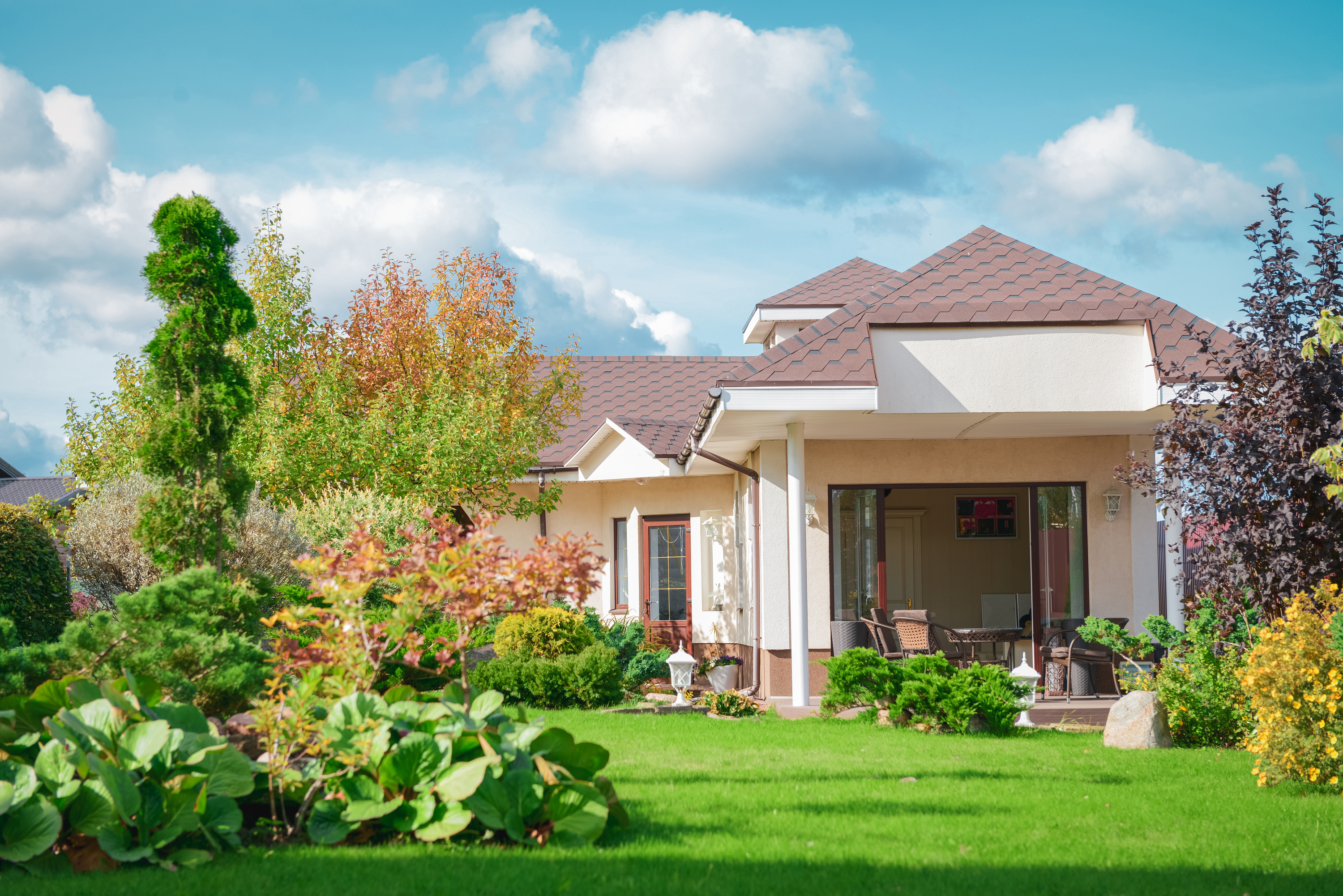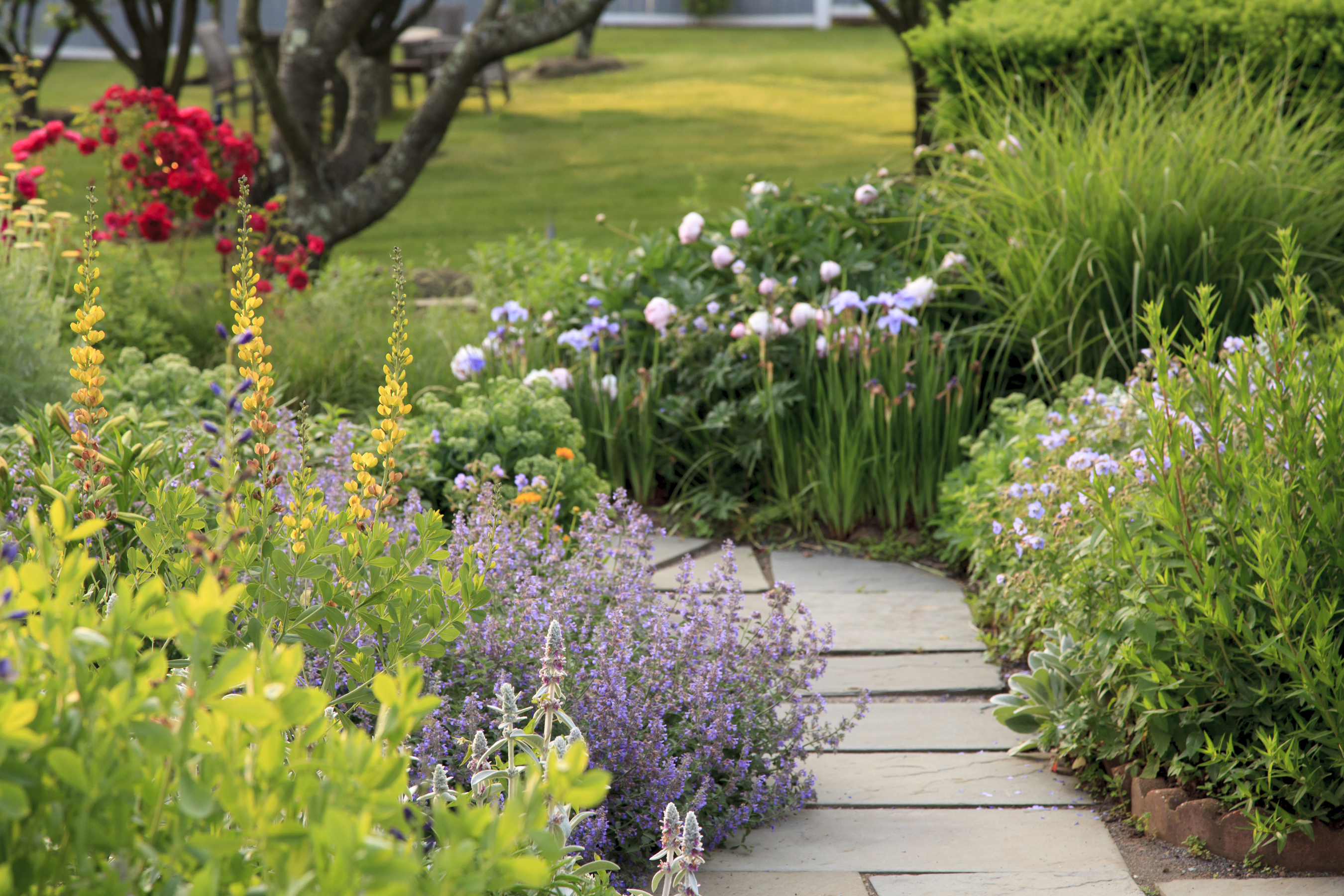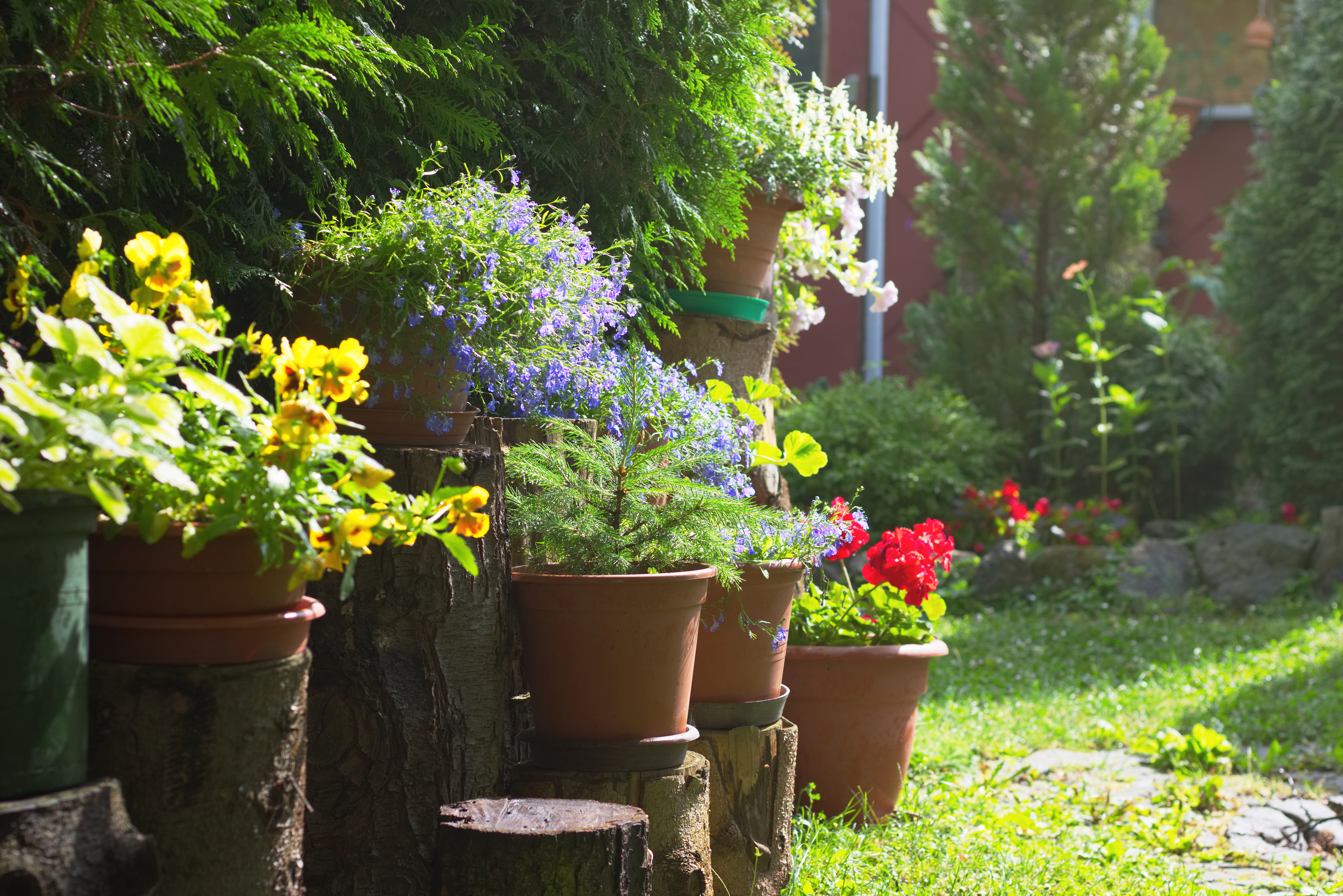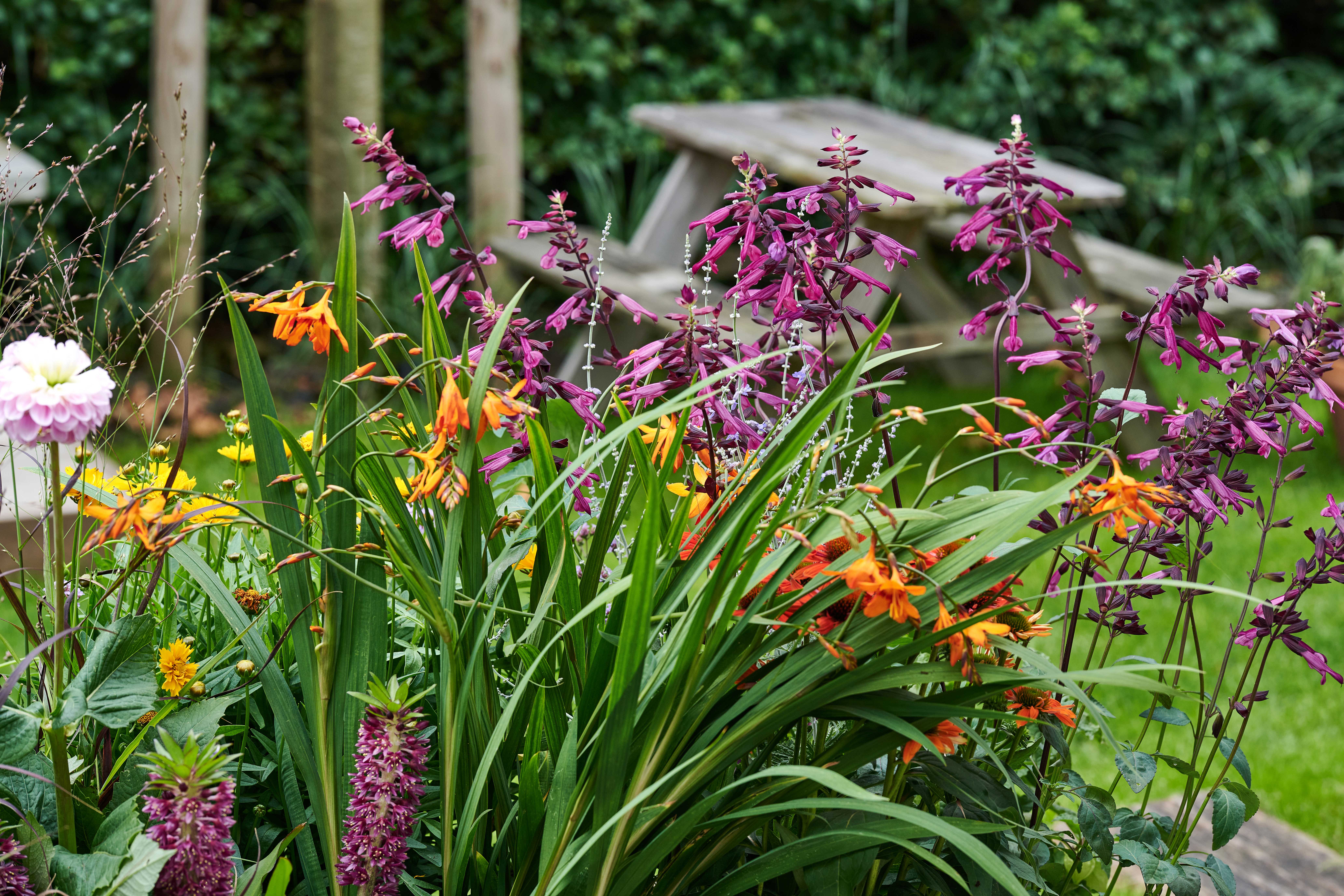
Starting on your first garden can be exciting and nerve-racking, and you're bound to make gardening mistakes. After all, a lot of gardening is about trial and error, careful planning, prepping, and watching how your efforts come together. Sometimes they can be a big success, and at other times a complete disaster. But you need to take it all in your stride.
To help you through the process, and to make you a pro in no time, we decided to pin down the most common errors people make. Read on for 10 tips on what not to do in your backyard gardens, by top experts who school you on first-timer no-nos.
1. Planting in the wrong location

The foremost thing to remember before starting your modern garden is where exactly you're going to sow the seeds. The right location is of huge significance.
'A big misconception by new gardeners is that all plants love the sun,' says Chris Bonnett, founder of GardeningExpress. 'Whilst sunlight is important, not all plants will require the same amount. Some will need partial sun, some will require shade, and so on. To avoid this make sure you research what kind of location is best for your plant. As a general rule of thumb for new gardeners, try to start small, and don’t be disheartened by any mistakes you make along the way. Gardening is a learning process and starting small will allow you to concentrate and focus on a small space before expanding it as your skills grow.'
'It's the same for flower-lovers who plant the wrong things in the wrong places,' says Whitney Bromberg Hawkings, founder of FLOWERBX. 'Some summer floral varieties like dahlias love the full sun – needing 6-8 hours of direct sunlight to bloom at their best all season long. Meanwhile, flowering shrubs like hydrangeas enjoy dappled shade – not too much sun but not too little either. By understanding which plants thrive where you’ll reap a bounty of flowers throughout the year.'
2. Poor soil preparation
After finding the right location, you need to check if the soil is prepared and ready for cultivation. Do a simple soil test – this is one of the most important tasks on how to plan a modern garden. You can purchase a simple test kit online or at a gardening center, as this will tell you exactly what you are working with and what you can do to improve it. Many-a-times first-time gardeners skip this step, and later find it surprising when their plants do not grow or die quickly.
'Different plants require different types of soil to thrive so make sure you’re choosing the right soil for the plants you wish to grow,' says Chris. 'After that, you’ll want to add organic matter like compost and manure to improve the soil fertility and give your plants the best environment to thrive in.'
3. Watering the garden at the wrong time
Don't be miserly when it comes to watering your garden. Deep, thorough watering once per week is better than splashing on a little every day that does little or nothing to your greenery You need to ensure that the ground is wet several inches down after you’re done watering. If it isn’t, then you aren’t sprinkling enough water.
Also, you need to be mindful of when is the best time to water your garden.
'Watering your garden at the wrong time of day – particularly on the hot summer days we’re currently experiencing – can make or break a beautiful garden aesthetic,' says Whitney. 'The key is to water at the start or end of the day, helping your plants retain at much moisture as possible. If you choose to rehydrate your plants during the warmest parts of the day, the water will evaporate quicker and your leaves and petals are more likely to be scorched by the sun.'
Largely, the morning is the best time when the plants make use of all the moisture, and by the time it's evening and the temperature drops, the garden is drier. During hot summer months, it's best to water your plants in the evening as less water will be lost to evaporation.
4. Overwatering the garden

Just the way you need to be careful to not under-water your lawn, similarly giving plants too much water is detrimental to their growth. This can lead to rotted roots and yellow leaves. One way to control and standardize the amount of water you give your dry or vegetable garden is by setting up an irrigation or sprinkler system that usually goes on every other day.
'When it comes to watering many beginners think more is better but this isn’t the case and not all plants require the same level of watering,' says Chris. 'The best way to avoid this mistake is by learning about what you are planting and what it needs. This will allow you to keep an eye on the soil and its moisture, and water the plant accordingly.'
5. Planting at the incorrect depth
'Another mistake beginner gardeners tend to make is planting at the incorrect depth – either too high or too low/deep,' says Kat Aul Cervoni, landscape designer and founder of Staghorn NYC and The Cultivation by Kat. 'For this, you need to keep a few things in mind. The soil surface of the plant/top of the root ball should be flush with the ground it’s been planted in. Plantings that are placed too high, or shallow, will end up having roots exposed leading to dryness and die-off. On the opposite side of things, plants that are planted too low/deeply are at risk of having water pooling around their base which can cause root rot, as well as the suffocation of the roots.'
The ideal depth of 8-12 inches will suffice for most situations.
Also, while planting, keep one myth out of your mind that you can only grow one type of plant in a bed. Interplanting, intercropping or companion planting is a great practice. This will help whittle weeds and bring in beneficial pollinators. Plus it reduces pests and disease and leads to a healthier crop as similar plants are no longer competing for nutrients.
6. Overfertilizing the garden

Every gardener, especially the first-time ones want their plants to be healthy and have a good crop. However, in the pursuit to build a long-lasting garden, many-a-times people fall into the bad habit of overfertilizing the greens. While the intentions may be good, the results lead to wilted or browned plants that have accumulated too much fertilizer salts and are unable to flush them out.
A big rule of urban gardening is managing fertilizers judiciously. Largely, the fertilizer application rate is between .75 and one pound of nitrogen per 1000 square feet. The timed-release fertilizer should be applied at least 5-6 times per season, to build a healthy and long-lasting garden. If you don't want to buy a chemical fertilizer from the market, you can also use the organic alternatives available online or in gardening stores, or choose homemade alternatives like coffee grounds.
7. Not understanding the garden's light conditions

To maintain a healthy flower bed, a lush garden, or a vegetable patch, you must know and understand the light and shadow conditions of your lawn.
'I think one of the most important things a new gardener should do is become extremely familiar with the light conditions in their garden before they plant anything new,' says Kat. 'This can take time! Some spaces may seem sunny in winter time but are suddenly quite shady once the tree leaves bloom in spring. Or, perhaps a wall casts long shadows in winter leading you to think it’s a fully shaded space, but in summer it’s full of blazing sun and exposed. If a plant isn’t getting the correct sun exposure, it will almost certainly fail to thrive and in short order too. Oftentimes, people are mesmerized by the colorful sun-loving plants and end up planting them in spaces that are a bit too shady. Those plants quickly become weak and leggy and stop blooming.'
'Also, read the label on the plant you're going to buy,' says Kat. 'I think a lot of new gardeners get caught up with the beauty of a plant without getting to know its needs first (which are almost always listed on the label). If you’re unsure of a plant's light needs, be sure to ask a salesperson or do a quick Google search on your phone.'
8. Incorrect spacing between plants
Whether yours is a tropical garden, a dry one, or a narrow patch, you want to make sure that it looks aesthetic – not overcrowded or underplanted. You need to be able to find a balance between spacing and arrangement. Also, knowing plant height at maturity is crucial in nurturing all the plants in the garden. While thinking of spacing, you’ll want to provide adequate area for support structures for tall, vining, and climbing plants as well.
'Gardeners who are just starting often don’t correctly space their plantings – between each other and also next to structures,' says Kat. 'This is another scenario where carefully reading the label of the plant is important to know the height and width that the plant will eventually reach. For example, plants spaced too far apart will end up having unattractive gaps between them, leading to a sparse and patchy-looking garden bed. Alternatively, plants placed too close together will wind up growing into a jumble and are likely to compete with each other for light, water, and nutrients.'
'Not only is proper spacing important between different plants but also between plants and structures – especially one’s house, driveway, paths, etc,' says Kat. 'This mainly applies to trees which can be extremely problematic if planted too close to a structure as it will lead to roots growing into and disrupting siding, gutters, and even the foundation, etc. Trees and shrubs that are too large for a space, can cover up windows, porches and present maintenance issues galore.'
9. Choosing wrong plants for the season

It's easy to look at blogs and gardening stores and get excited about planting new varieties in your outdoors. But a lot of newbies don't realize that not all plants are suited to be planted in your area, or are even ideal for the season. Before starting your courtyard garden or sensory garden, find out varieties that are compatible with your region's growing conditions and climate, as this will save you the heartache of losing plants.
The specific variety of plants that will survive only in a specific climate or temperature are called 'annuals' meaning they live for only a one-year cycle of growth and flower production, and then they die. For instance, Archangel Raspberry only blooms from late spring to late summer, Pink China Elephant Ear blooms only in June, Forget Me Not and Larkspur thrive in the cool to moderate temperatures of early spring and fall, and Marigolds and Petunia thrive only in late spring. If you are up for a new gardening challenge every year, then annuals are great as you can experiment with new plants and color schemes without making a long-term commitment. Otherwise, unlike their short-lived counterparts, perennials are typically hardy plants that return in the spring.
10. Pruning at the wrong time
For the perfect blooming, or cut flower garden, pruning is essential. But this doesn't mean you prune your plants at any time of the day or season.
'We all know pruning our beautiful flowering plants is a good way to ensure a healthy growth of flowers, but doing so at the wrong time in the season can make plants more susceptible to disease and even stop them from flowering altogether,' says Whitney. 'Prune in the late winter or early spring – when your plant is dormant and not growing – to make sure you’re setting them up for a successful flowering season.'
'Some flowers, like dahlias and sweet peas, are cut-and-come-again varieties which encourage more growth as they are pinched out and pruned, so be sure to do your research.'







